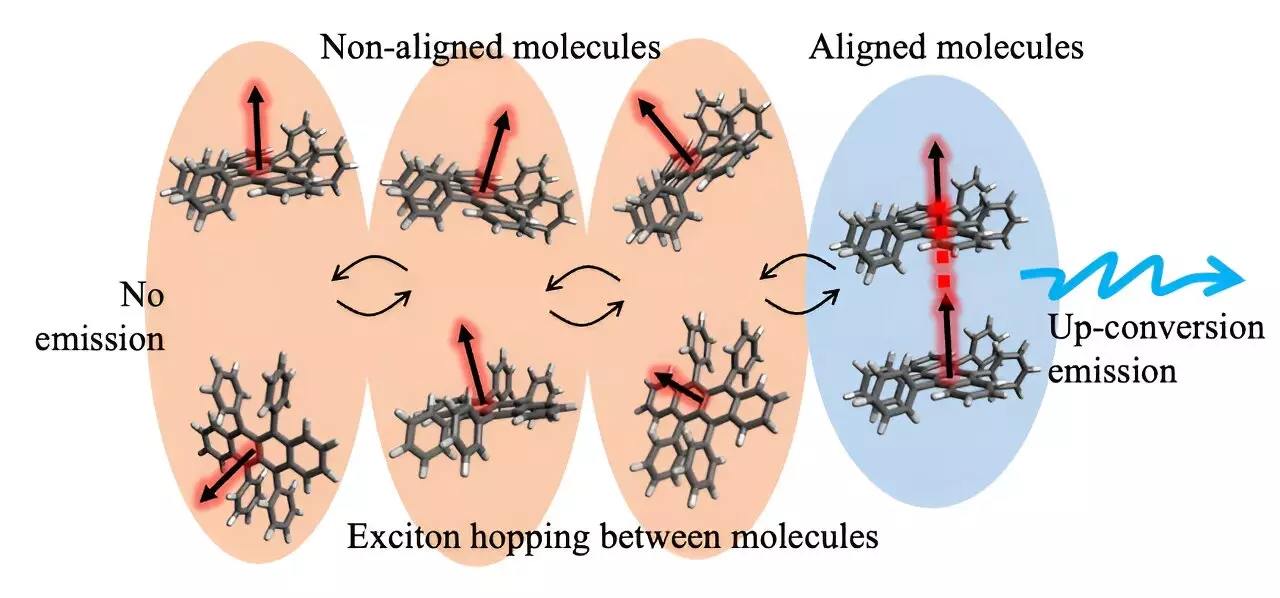Efficiency is key when it comes to converting low-energy photons into high-energy photons for various applications such as PV cells, OLED displays, and anti-cancer therapies. Researchers at Kobe University have made a groundbreaking discovery that sheds light on the microscopic mechanism behind this process. By studying the electron spin states of moving and interacting excited states, they have identified a crucial factor that allows two triplet excitons to efficiently combine their energies into a single molecule, resulting in the emission of a high-energy photon.
The traditional approach to developing materials for photon up-conversion has been facing a major roadblock due to the lack of understanding of the electron spin states involved in the process. However, the research led by Kobori Yasuhiro and his team has provided a much-needed design guideline for creating highly efficient up-conversion materials. By observing the time evolution of electron spin states in solid-state systems, the researchers were able to model the motion of electron spins and propose a new theoretical framework for the up-conversion process.
One of the key findings of the study is the significance of aligning the electron spin states of two triplet excitons for the transfer of energies to a light-emitting molecule. This alignment depends on the relative orientation of the molecules involved in the process. For a high likelihood of successful energy transfer, the triplet excitons must be able to move between molecules of various orientations at a moderate speed. This allows enough time for the interconversion of different excited states, leading to the efficient combination of energies and the emission of a high-energy photon.
The newfound knowledge about electron spin states and their role in photon up-conversion has far-reaching implications for various fields beyond solar cells and displays. Kobori Yasuhiro expresses his optimism about the potential impact of this discovery on fields such as photodynamic cancer therapy and diagnostics. By utilizing near-infrared light for optical up-conversion without causing harm to the human body, this research opens up possibilities for innovative approaches to medical treatments and diagnostics.
The research conducted at Kobe University has opened up new avenues for the development of highly efficient photon up-conversion materials. By focusing on the electron spin states of excited states and their alignment, the researchers have provided a clear roadmap for designing materials that can effectively convert low-energy photons into high-energy photons. This breakthrough has the potential to revolutionize not only the field of renewable energy but also the realm of medical treatments and diagnostics.


Leave a Reply